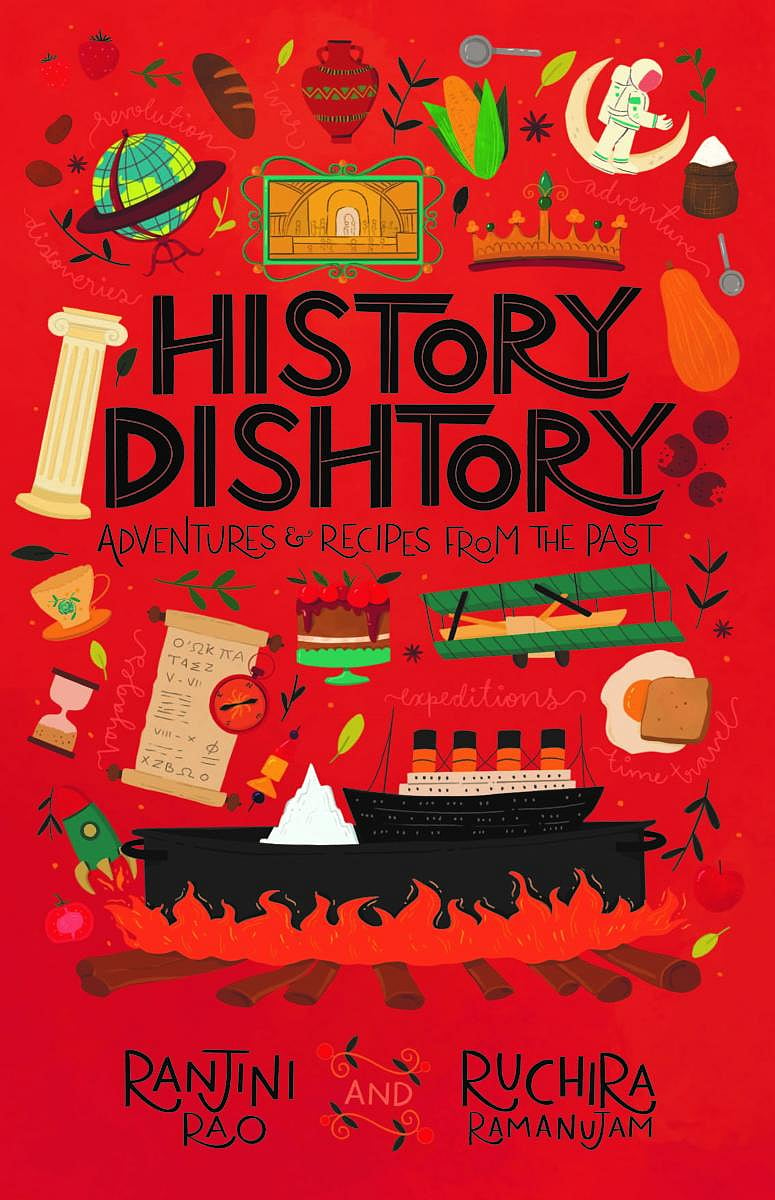

Have you ever wondered what the first meal on the Moon was, or the last meal on the Titanic before it sank to the bottom of the North Atlantic? Was salt really such a big deal that our freedom fighters had to march for it in 1930, and how did soldiers survive on just one square meal a day while being hunkered down in the trenches during the First World War?
As history buffs and food lovers, we have always been interested in the “backstory.” For example, while wandering through a historic fort in Jaipur, we have caught ourselves staring at the massive cauldrons and copper pots, wondering what exactly Jodha cooked in them, to serve to the royals after she was married to Akbar. In the Muziris Heritage Museum in Pattanam, the relics of oil decanters, mortars and pestles, and related kitchen paraphernalia have prompted us to dig deeper into the Malabar-Spice Route connection. Our daughters are just as curious about the food in history, too. Their interest in the subject is wide and deep, ranging from the gluttonous characters in Norse mythology, the strange eating habits of Greek demigods, to the gripping stories of good vs evil behind food-centric Indian festivals, and the fun treats that are a part of established American practices like Halloween and Mardi Gras. This gave us an idea for a book for children, involving history and food. We wanted to create an out-of-the-textbook experience, where children could read and understand chapters in ancient history without having to merely memorise dates and names. And so, in this book, we have attempted to unravel the food connection in world history, told through an exciting and entertaining story. The plot involves twins Siya and Sam, who embark on worldly adventures through a game they play on a cutting-edge App. It takes them back to different points in history and gives them a taste of the food people ate at the time. There are fifteen chapters, and each leads to a recipe. All recipes are tried and tested in our kitchens, and we’ve tried to make them interesting for our young readers, but in some cases, they will learn that there is a bleakness to the food. Recipes from times of revolutions and wars were bleak and minimalistic: lots of soups and stews, pantry ingredients, rationing and stretching the food to feed hungry families. The emphasis there was really more on filling stomachs than fancy cooking. So, when we look at this generation of children, with a privileged upbringing and access to all manner of exotic foods, we need them to understand that there were times when food didn’t come neatly packaged in boxes and bags, and people could not just ask for and eat whatever they wanted. This delicious potboiler has drama, mystery, fun and food to inspire children to read more, and understand how history has shaped the world.
Waldorf pudding
Serves: 8
Prep time: 25 mins
Baking time: 25 mins
Ingredients
2 apples
1 tsp cinnamon powder
½ tsp ginger powder
Pinch of grated nutmeg
¼ cup golden raisins
¼ cup roasted walnuts
1 cup sugar
1 cup all-purpose flour
2 tsp baking powder
1 cup milk
100g melted butter
Method
Preheat the oven to 180°C.
Peel the apples and remove their core.
Thinly slice the apples and place them in a glass bowl.
Sprinkle the cinnamon, ginger, and nutmeg over the apples. Toss well using a spoon.
Microwave the apples on full power for 2 minutes.
Meanwhile, chop the roasted walnuts.
Mix the raisins and walnuts with the apples. Set aside.
Grind the sugar in a mixer-grinder.
Place the ground sugar, flour, and baking powder in another bowl and whisk well.
Pour in the milk and whisk until smooth. Transfer the batter to a jug to pour it easily.
Spoon an equal amount of melted butter in each of the ramekins/bowls.
Now pour the batter on top of the butter. Fill all the ramekins/bowls equally.
Spoon the apple mixture on top of the batter, adding an equal amount to each ramekin.
Place the ramekins on a baking sheet and carefully put it in the oven.
Bake for 20–25 minutes or until the top of the pudding is golden. Serve hot.
(Ranjini Rao & Ruchira Ramanujam are the authors of ‘The Backstory of History Dishtory’, by Hachette India, 2021.)